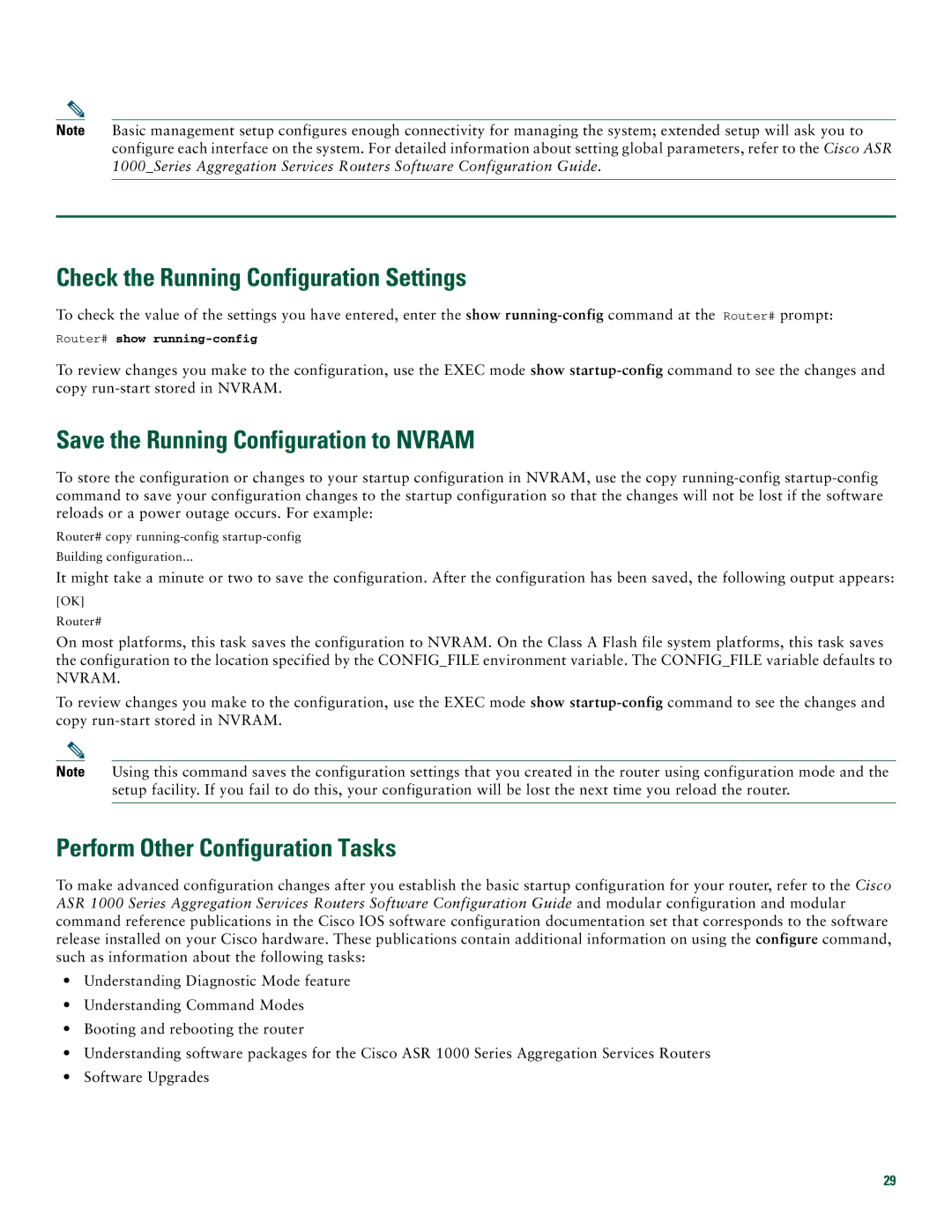
Note Basic management setup configures enough connectivity for managing the system; extended setup will ask you to configure each interface on the system. For detailed information about setting global parameters, refer to the Cisco ASR 1000_Series Aggregation Services Routers Software Configuration Guide.
Check the Running Configuration Settings
To check the value of the settings you have entered, enter the show
Router# show
To review changes you make to the configuration, use the EXEC mode show
Save the Running Configuration to NVRAM
To store the configuration or changes to your startup configuration in NVRAM, use the copy
Router# copy
Building configuration...
It might take a minute or two to save the configuration. After the configuration has been saved, the following output appears:
[OK]
Router#
On most platforms, this task saves the configuration to NVRAM. On the Class A Flash file system platforms, this task saves the configuration to the location specified by the CONFIG_FILE environment variable. The CONFIG_FILE variable defaults to
NVRAM.
To review changes you make to the configuration, use the EXEC mode show
Note Using this command saves the configuration settings that you created in the router using configuration mode and the setup facility. If you fail to do this, your configuration will be lost the next time you reload the router.
Perform Other Configuration Tasks
To make advanced configuration changes after you establish the basic startup configuration for your router, refer to the Cisco ASR 1000 Series Aggregation Services Routers Software Configuration Guide and modular configuration and modular command reference publications in the Cisco IOS software configuration documentation set that corresponds to the software release installed on your Cisco hardware. These publications contain additional information on using the configure command, such as information about the following tasks:
•Understanding Diagnostic Mode feature
•Understanding Command Modes
•Booting and rebooting the router
•Understanding software packages for the Cisco ASR 1000 Series Aggregation Services Routers
•Software Upgrades
29
